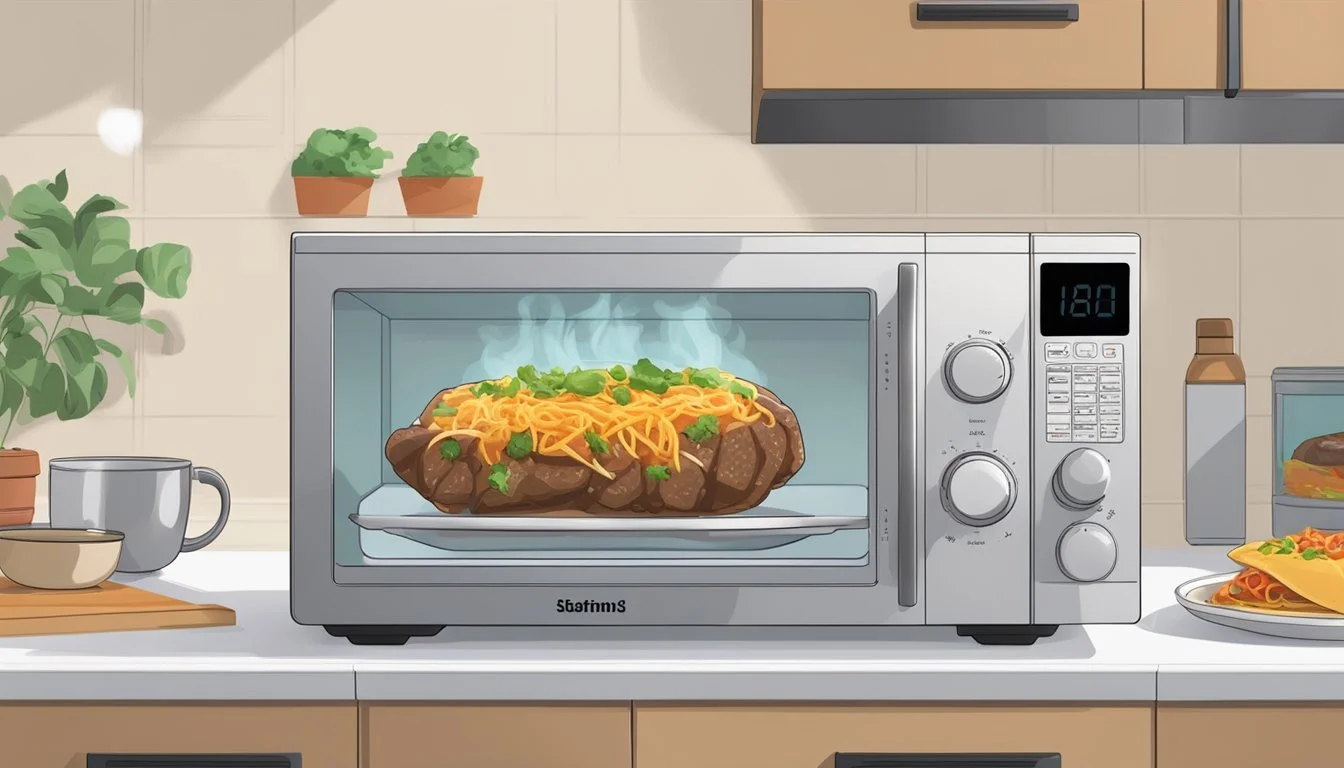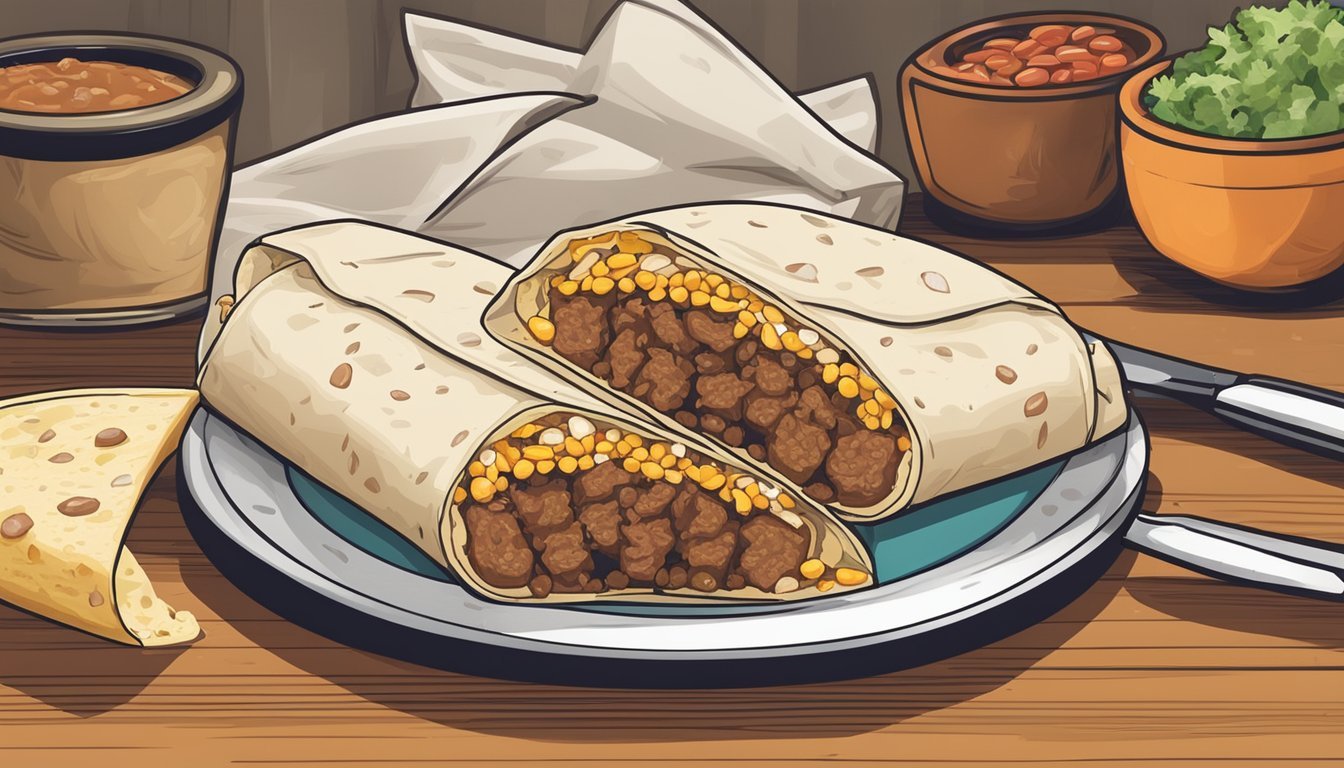How Long Do Beef Burritos Last?
Storage Tips and Safety Guidelines
Beef burritos are a popular and versatile meal option, enjoyed by many for their flavor and convenience. Whether homemade or store-bought, knowing how long they last is crucial for maintaining freshness and safety. Properly stored in the refrigerator, beef burritos can last for 2-3 days. This timeframe ensures that the ingredients, particularly the beef, remain safe to eat and full of flavor.
For those who prefer to buy store-bought burritos, storage guidelines remain essential. These pre-made options should be refrigerated promptly and consumed within the same 2-3 day period. This helps prevent the growth of harmful bacteria and maintains the quality of the burrito.
Freezing is another excellent way to extend the shelf life of beef burritos. When frozen properly, they can last up to 2-3 months. Thoroughly wrapping them in foil or plastic wrap before freezing can help prevent freezer burn and ensure they taste just as delicious when reheated.
Overview of Beef Burritos
Beef burritos are a popular and versatile dish enjoyed by many. They consist of a flour tortilla filled with seasoned beef and various other ingredients, offering both nutritional value and great taste.
Ingredients and Varieties
Beef burritos typically feature ground beef as the main protein. This beef is often seasoned with spices like cumin, paprika, and garlic powder. Common ingredients in beef burritos include beans, rice, cheese, and vegetables such as tomatoes and lettuce.
Fillings can vary widely. Some might add guacamole, sour cream, or salsa for extra flavor. Choices in cheese range from cheddar to Monterey Jack. The type of beans used can also differ, including black beans, pinto beans, or refried beans.
The flour tortilla is most commonly used for its pliability. However, whole wheat or gluten-free options are available for those with dietary preferences.
Homemade vs Store-Bought
Homemade beef burritos allow for complete control over ingredients and customization. One can choose the quality of the beef and opt for organic or grass-fed options. This also means better control over the nutritional value by managing fat content and sodium levels.
Store-bought beef burritos, on the other hand, offer convenience. These are often pre-packaged and can vary in quality. While some might mimic homemade recipes closely, others may contain preservatives and be higher in sodium.
Pre-made options are readily available in supermarkets, often in the frozen section. Whether homemade or store-bought, each has its merits depending on what the individual prioritizes—convenience or customization.
Proper Storage Methods
For beef burritos to stay fresh and safe to eat, proper storage methods are crucial. Appropriate refrigeration, effective freezing techniques, and vigilant practices to prevent foodborne illnesses are key points to consider.
Refrigeration and Shelf Life
Beef burritos should be refrigerated promptly to extend their shelf life and ensure safety. A freshly prepared burrito can last 3-5 days in the refrigerator if stored at or below 40°F (4°C). The choice of ingredients also plays a role; burritos with dairy or meat products may spoil faster than vegetarian options.
Store burritos in an airtight container to prevent moisture loss and absorption of other food odors. Alternatively, wrap them tightly in plastic wrap or foil. Labeling the container with the preparation date helps keep track of freshness.
Freezing Methods
Freezing beef burritos is an excellent way to extend their shelf life up to 3 months. Before freezing, wrap each burrito securely in foil or plastic wrap to protect against freezer burn. Placing them in a freezer-safe airtight container offers additional protection.
For best results, freeze burritos on a baking sheet first to ensure they don't stick together, then transfer them to the container. Thawing should be done in the refrigerator to maintain the texture and taste.
Tips for Preventing Foodborne Illness
Foodborne illnesses can be prevented by following proper storage and handling practices. Burritos left at room temperature for over two hours should be discarded to avoid bacterial growth. Maintain the refrigerator temperature at or below 40°F (4°C) and the freezer at 0°F (-18°C) or lower.
When reheating, ensure the internal temperature of the burrito reaches at least 165°F (74°C). Use a food thermometer to check. Avoid cross-contamination by keeping raw ingredients separate from cooked burritos and regularly cleaning kitchen surfaces and utensils.
Reheating Beef Burritos
When reheating beef burritos, it is crucial to follow safe thawing techniques, use appropriate methods for heating, and maintain both taste and texture to ensure a satisfying meal.
Safe Thawing Techniques
Proper thawing ensures the beef burrito heats evenly. If the burrito is frozen, move it from the freezer to the refrigerator the night before. This keeps the temperature safe and avoids bacterial growth.
For faster thawing, place the wrapped burrito in a sealed plastic bag. Submerge it in cold water, changing the water every 30 minutes. Burritos thawed in this way should be reheated immediately.
Reheating in Microwave and Oven
Microwave:
Remove any foil and place the burrito on a microwave-safe plate.
Cover it with a damp paper towel to keep it moist.
Heat on medium power for 2 minutes.
Flip and heat for another 1-2 minutes until the internal temperature reaches 165°F.
Oven:
Preheat the oven to 325°F.
Wrap the burrito in aluminum foil.
Place on a baking sheet.
Heat for 20-30 minutes, checking the internal temperature with a food thermometer to ensure it reaches 165°F.
Maintaining Taste and Texture During Reheating
To preserve the moisture and crispiness of the burrito, use a skillet after microwaving:
Heat a skillet over medium heat.
Place the burrito in the skillet, seam-side down.
Cook for 2-3 minutes per side until the tortilla is crispy.
Avoid leaving the burrito at room temperature for more than two hours. This prevents the growth of harmful bacteria and maintains the quality of the meal. Using the methods provided helps ensure the beef burrito remains as delicious and safe as when it was first prepared.
Maximizing the Lifespan of Beef Burritos
To extend the lifespan of beef burritos, proper storage techniques and recognizing signs of spoilage are essential. This ensures safety and maintains the best quality.
Best Practices for Wrapping and Sealing
Properly wrapping and sealing beef burritos prevent spoilage. Wrap burritos tightly in aluminum foil or plastic wrap. This blocks moisture and air. For an added layer of protection, place the wrapped burritos in an airtight container. This is especially important if storing in the freezer.
Using double layers can prevent freezer burn, which affects the taste and texture. Label containers with the date to track storage time. If frozen correctly, beef burritos can maintain their quality for up to three months.
Signs of Spoilage
Recognizing spoilage in beef burritos is crucial to avoid foodborne illness. Pay attention to smell first. Any sour or off odors indicate spoilage. Color changes, particularly if meat turns gray or green, are another sign. The texture of the beef should be firm and consistent; slimy or sticky textures suggest it’s unsafe to consume.
Check the taste cautiously; any unusual flavors mean the burrito is not safe. If burritos have been stored in the refrigerator, consume them within 3-5 days. Always discard burritos if they’ve been at room temperature for over two hours. Making sure leftover burritos are sealed properly and monitored helps prevent health risks.





